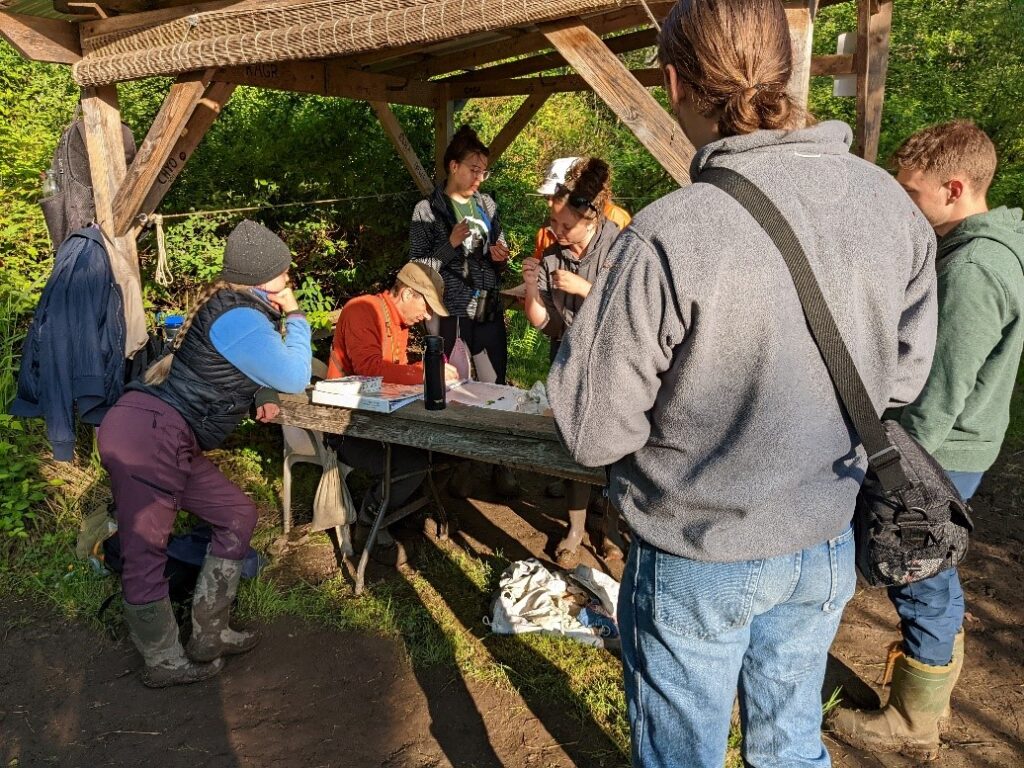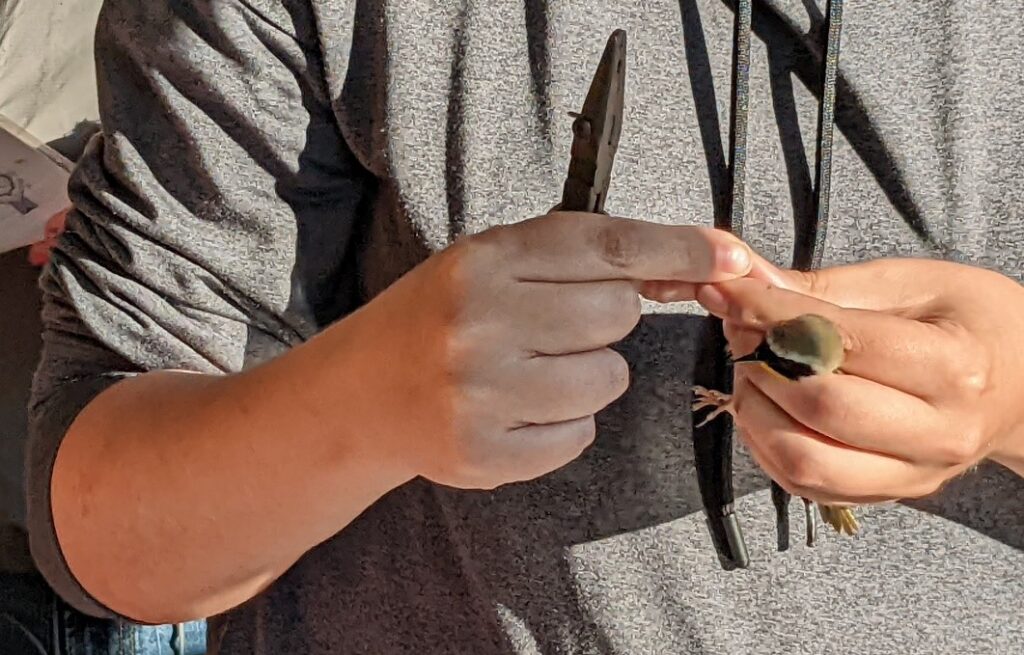On May 24, I spent a couple of hours watching VIU’s bird banding team led by Professor Eric Demers in action at the Buttertubs West Marsh. Nature Nanaimo members were invited and I decided to sign up. I was slightly apprehensive since I am a bit of a softie when it comes to watching animals in distress. At the same time, I know that the birds are being treated as well as can be, and the benefits of banding to learn about bird migration, population trends, longevity etc. makes the activity worthwhile. For example, a study published in 2013 showed that cliff swallows have evolved in response to traffic in order to improve manoeuvrability to avoid cars – swallows nesting near roads have evolved shorter and broader wings compared to swallows nesting away from roads (https://www.wired.com/2013/03/cliff-swallow-evolution/).
Bird banding involves setting up a number of mist nets. When birds hit the net they fall down and because the net is designed with pockets where the birds are captured. More specific information about various aspects of bird banding can be found in the bird banding manual compiled by Eric (https://aerl.viu.ca/sites/default/files/viu-acc-010.1-bird-monitoring-and-banding-manual.pdf ). The banding was done by several experienced and licensed banders, and a number of VIU students attended and were trained by the experienced crew. I got to release a newly banded common yellowthroat warbler, but that was as close as I got (which was fine by me). About 10 species were banded while I was there.
Nature Nanaimo President, Doug Fraser attended the banding the following week (May29) and wrote: “I went to bird banding yesterday and it was fabulous – we hit the jackpot with 14 species in about 1.5 hours including two Anna’s males, two barn swallows (the first they have caught in 2 years), a Willow flycatcher, brown-headed cowbirds (male and female), common yellowthroats (male and female), cedar waxwings, a downy [woodpecker], goldfinch, towhee, song sparrow, starling, robins, bushtit and pacific wrens!”
If you have the opportunity to visit a bird banding station in the future, you should consider doing so.
A big thanks to Eric Demers for inviting us.
Submitted by Staffan

Bird banding in progress. Dr. Demers in the orange shirt.

A male Common Yellowthroat warbler being banded.
